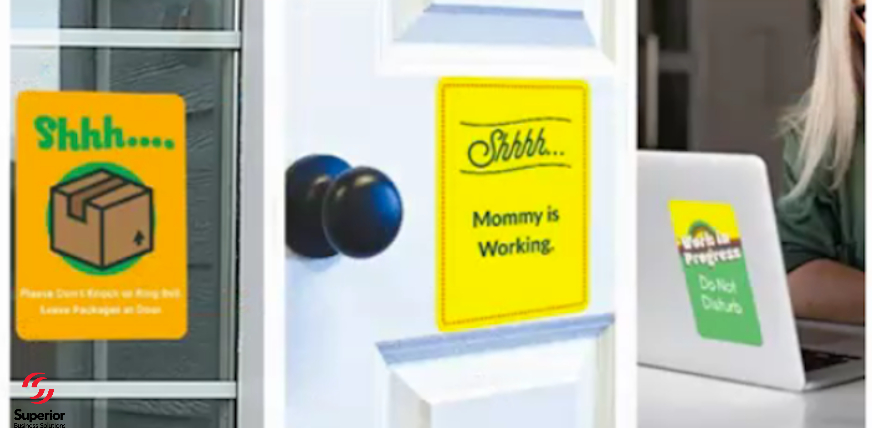5 Ways to Be There for both Your Job and Your Family
We have often discussed work-life balance on this forum. Usually, we talk about improving in-office productivity to shorten your workday and get home sooner. That makes sense, of course, since that’s what our tools and products do. But these are challenging times, so it makes sense to look at how to address this balance when “work” is “home.”
Working from home is nothing new. But it is new to hundreds of thousands of American workers right now. And, while it eliminates the possibility of staying late at the office, it can create other issues. For example, flexibility is desirable. But does that comfortable home environment and the seeming “availability” to family members get in the way of job responsibilities? Today I’d like to share a few tips I have uncovered in my research to help establish boundaries and ensure that both your job and your family thrive.
A Time for Sensitivity
But first, an important point. Right now, uncertainty rules. Everyone is a bit uneasy, and it can even be hard to concentrate. But that’s also true of your family. And during unsettled times, they may welcome your presence at home. You are a source of extra comfort. A sounding board. Someone to “share” breaking news with.
While frequent interruptions won’t help your productivity, this is not the time to draw rigid lines. Be understanding when a family member needs a little reassurance or contact with you. That’s are more important than whatever you are working on, at least for a brief period. But the rest of the time, here are some suggestions that will help.
5 Ways Home and Office Can Coexist
I’ve done a lot of searching on the subject and narrowed it down to five areas that seem to be key in helping you stay organized and on-task while working from home. (There are others, and I can share those if you like. Keep reading.)
-
Stick to a Schedule
Make sure your day starts and ends at a regular time. It’s easy to stay in bed an extra half hour and enjoy an extra cup of coffee with the paper. Keeping to a schedule will make sure that hours aren’t lost. Mindset is everything. Get up, get showered and ready, and go to work! Let everyone know your working hours; co-workers, clients, and—maybe most importantly—family members in the next room.
It’s also good to make after-work or evening plans (a walk, a card game, cooking with family). It gives you something to look forward to, and a motivation to stay productive. It also helps keep you from working extra hours just because there’s no obvious “quitting time” or other employees leaving to remind you.
-
Choose a Workspace, and Stick to It
This doesn’t mean you have to rearrange the house. But it does mean you need to pick a spot and do most of your work (and keep your work-related materials there). Sure, working on the couch or the deck can be a nice diversion, but the time you spend retrieving your materials can add stress and waste time.
And once you pick that spot, get rid of the clutter. A makeshift office doesn’t have to be a messy one. And you’re already struggling to focus, so don’t invite other distractions in.
-
Take Lunchtime and Days Off Seriously
Stop working for lunch. For one thing, that gives you a chance to recharge and is important for your health. It’s even okay to run an errand “during” lunch; that’s one place where the convenience of working from home can pay off with time savings.
Secondly, eating a real, scheduled lunch helps prevent the day-long “grazing” that can happen when you work within range of your own kitchen. Frequent trips to the fridge or cupboard are not only unhealthy but also steal hidden minutes multiple times a day.
-
Get Comfortable with Online Sharing Platforms
You need to stay in touch with the office. Online meetings are not only necessary in many cases, they are good for you in terms of teamwork and “belonging” to your organization. A program like Slack or Google Hangouts can help you share documents and “work together” on projects.
And take the time to learn or brush up on video sharing platforms like Zoom, Microsoft Teams, WebEx, Skype and others. These allow you to hold meetings and successfully deal face-to-face with other employees, clients, etc. Good programs to know wherever you are working.
-
Get Dressed
This one sounds funny and specific, but it’s important. Resist the temptation to settle in at the computer still in that comfy night attire.
You don’t need to be overly formal, like coat and tie. But a professional outfit helps you get into a working mindset. (And it just might protect you from an embarrassing moment should one of those video calls come through.)
You’ve Got This – But We’re Happy to Help
And you’ve also got friends to help (and that includes us). If you are one of the employees suddenly working from home, be confident. You can handle it. And if you need more ideas on “best practices” in working from home, just contact us. (Note: we won’t mind if you’re in your pajamas.)
For example, these signs can help your employees get more focused time while working from home!

Be positive as you go through this experience. You’re gaining skills and helping solve a problem. Oh, and one more good thing: that favorite coffee mug from work will finally get washed now and then, instead of just rinsed…and speaking of coffee mugs, we have one that will blow your mind I will be telling you about in our next post. Stay tuned and stay safe!




